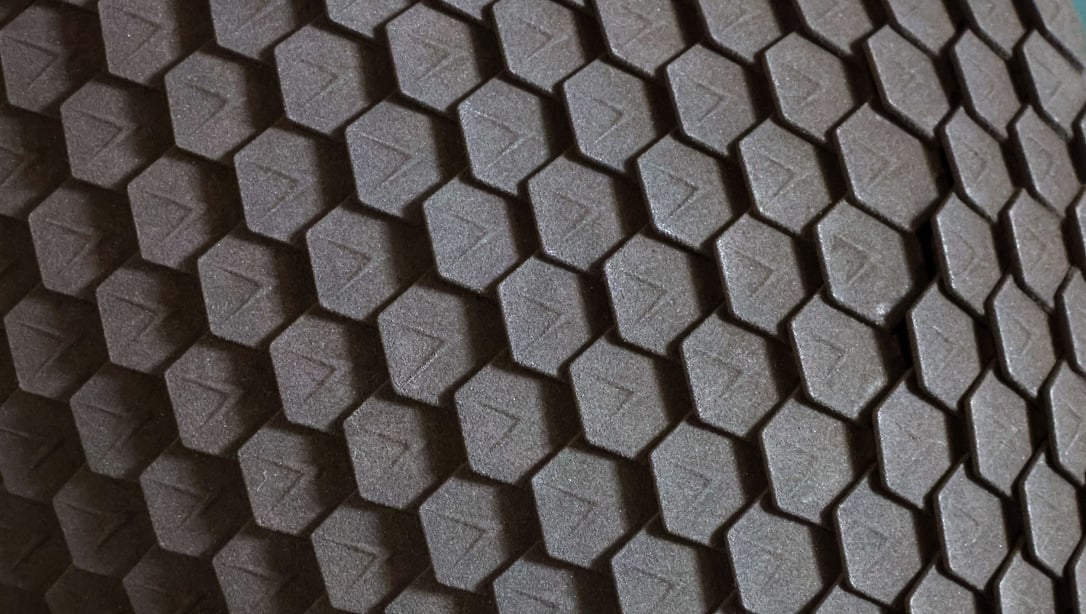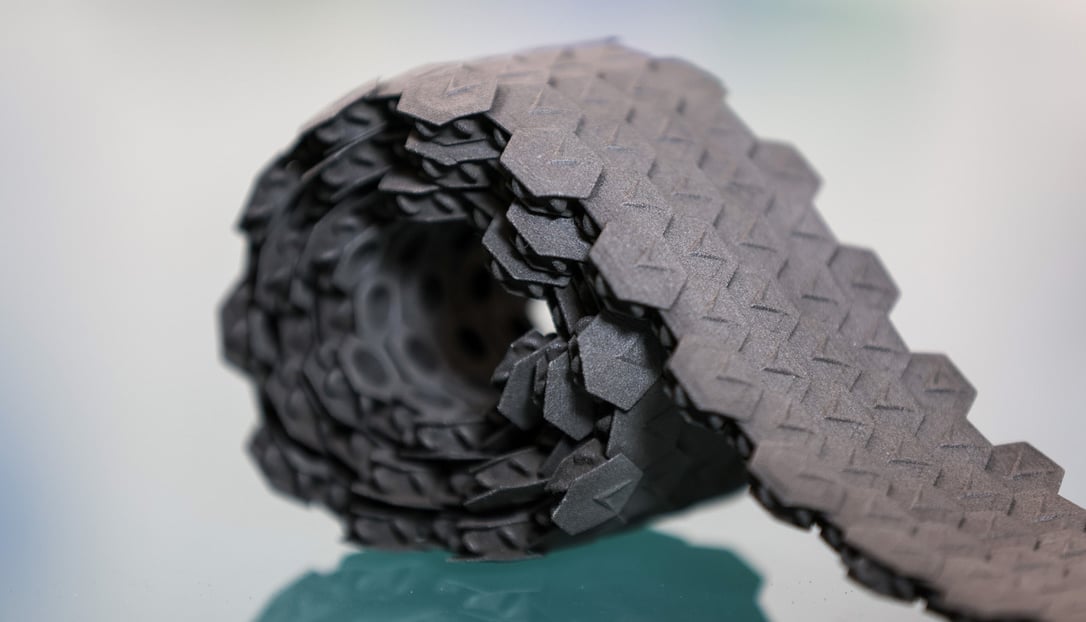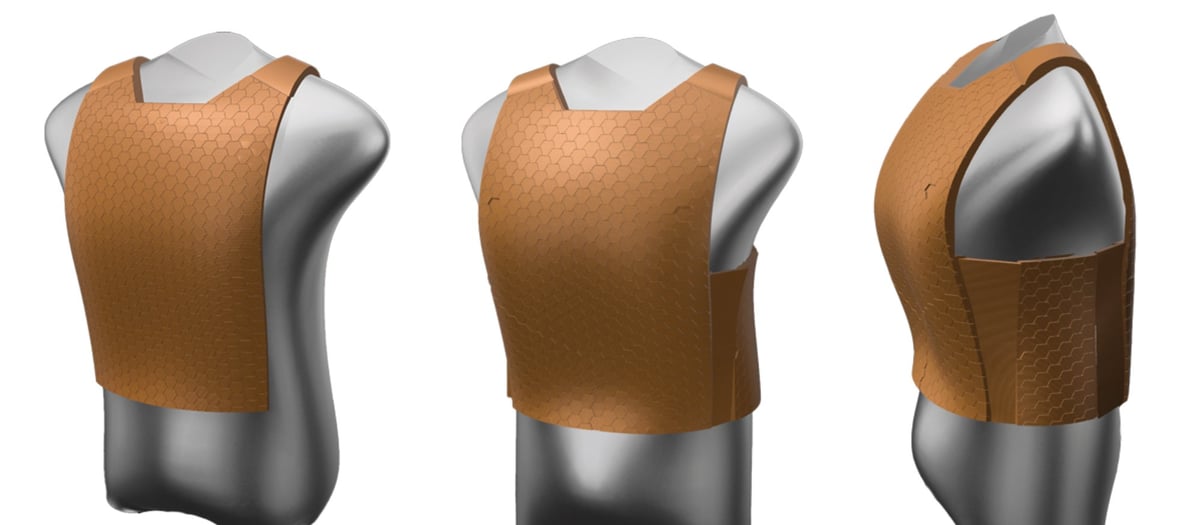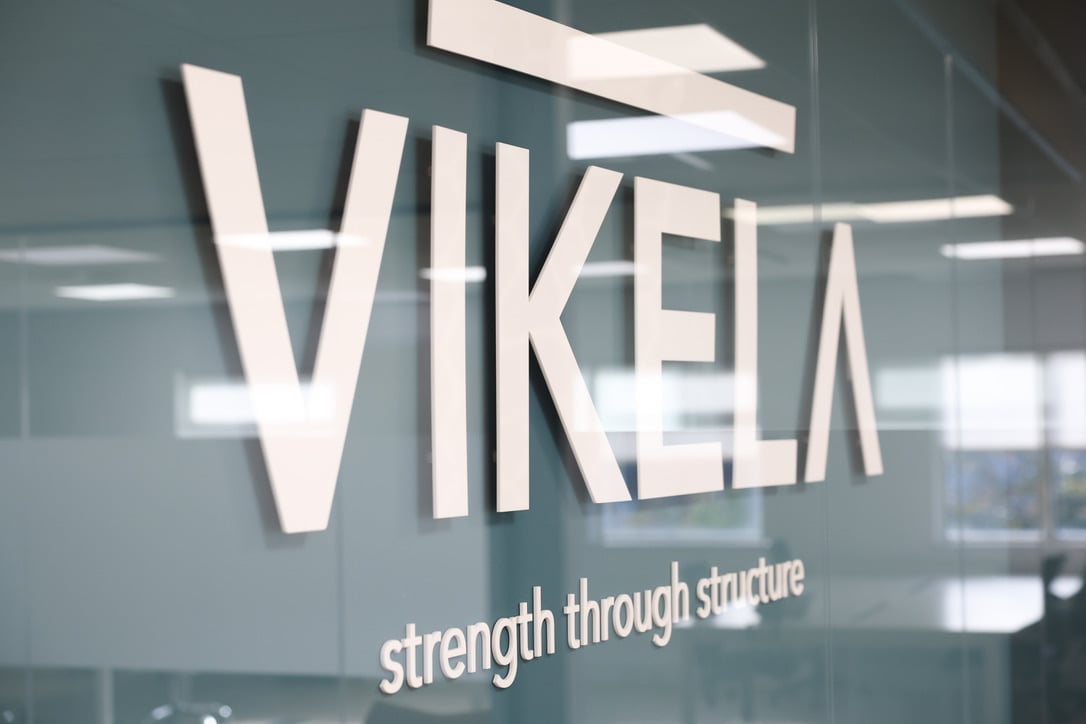When Peter Gilleece founded the body armor start-up Vikela (Zulu for “to protect”), he didn’t set out to 3D print the protection, but, like many other innovative products, 3D printing turned out to be the best solution.
The goal was a better fitting, lightweight, and more versatile body armor than the current market standards. Something that could be custom-made in more sizes, have the ability to bend and flex with the wearer, and be economical to manufacture.
Rather than develop a way to 3D print the commonly used Kevlar woven material or one of the more advanced materials emerging in this market, Vikela took a step back and reimagined how material, manufacturing method, and design could feed into each other to end up with something completely new.

There’s little doubt that the most common body armor worn by police officers and some militaries has an impact on mobility and fatigue. It can restrict movement, particularly during running or climbing, and contribute to lower back pain or joint strain.
Ill-fitting body armor can leave the wearer exposed to assailants and, for women, there are few that can conform comfortably to various chest and torso sizes. Because it’s uncomfortable to wear, those in high-risk professions who should wear it may opt not to.
Several material advances have emerged in recent years to address the weight and bulkiness of body armor, which is worn consistently by more than 90% of US law enforcement officers. Yet, solutions incorporating Dyneema, graphene composites, liquid armor, and adaptive materials, are generally more expensive than traditional body armor made from materials like Kevlar or steel, and challenging to manufacture at scale.
The global body armor market was worth $2.7 billion in 2023 and is expected to reach $4 billion by 2030 as demand grows for personal protection.
What Is Vikela Made Of?

With a primary focus on comfort, Gilleece developed a design, process, and material to manufacture body armor in virtually any size.
“We wanted something that we could more easily and cost-effectively make size variations of, so obviously we landed on 3D printing,” says Gilleece.
The body armor industry is no stranger to 3D printing technology. However, it’s primarily used for ergonomic trials of designs and production parts in non-ballistic applications, but not for the armor itself.
Vikela armor features interlocking six-sided shapes akin to chainmail looking much like armadillo skin. Gilleece won’t share the exact material but the polymer powder is able to be sintered in a modified selective laser sintering (SLS) 3D printer.
Details about his patent-pending process are also kept tight to the vest (pun intended) except he says:
“There’s an extra step on top of the sintering process that provides extra strength to the material. Instead of adding additives through the powder, we’re essentially doing an extra treatment on top of the sintering system to make sure that there’s good layer adhesion and to build extra strength.”
The process is not any type of binder jetting or post-processing. “You build a process inside the machine to better suit your design,” says Gilleece. “So you sinter it, and then you do the treatment, and then you put another layer down, and sinter, and then you might do a treatment, or you might skip a layer, depending on the design.”
The layer pattern determines if the protection is more like soft armor, traditionally made with kevlar, or hard armor, usually made with ceramics or metals. Vikela can produce both soft armor and ballistic-level protection from the same material.
“When you look at armor in nature, like snail shells, there’s a mix of hard layers and soft layers and the reason for that is that you get a cushioning effect from the softer layers, but the hard layers are there to stop the penetration. So what we’ve tried to focus on is the ability to create that hard layer, soft layer stack within the SLS print.”
While trying to mimic nature within a 3D printer, Gilleece also accommodates manufacturing efficiency. The body armor emerges from the 3D printer in one piece that’s then simply cleaned and inserted into the carrier system that holds the protection onto the body and might include clips for body cams or other accessories.

“We print the size we need, everything from a double XL to an extra wide or any custom measurement. There’s no extra assembly so we’re able to offer more efficiency than if we had all these extra labor steps involved.”
Inside the SLS build chamber, Gilleece stacks and folds the products to make full use of the build volume.
Currently, Vikela employs a branded SLS 3D printer but plans are to develop its own, single-purpose machine.
The custom printer Gilleece has in mind will strip away some design degrees of freedom. By building the “treatment” into the machine as defined by the design, Vikela has a more efficient and scalable manufacturing process.
The carrier system is outsourced to companies to manufacture according to Vikela’s customer’s designs and specifications. This offers customers who already have a carrier system the opportunity to swap their solid plates for the Vikela chain mail.
“If you give us the measurements, we can just print them to fit your current carrier system,” says Gilleece. “So you don’t need to upgrade all of your stock at once.”
Interchangeable and variable protection layers are becoming more common in the body armor market, yet the standard vest offers one protection level.
Vikela offers three levels of protection. “Depending on the threat level, you can have your stab protection in, and then if you think that the threat level is higher, you can put your ballistic protection in or your rifle-grade protection in. You’re not having to carry on the full bulk of all of it all the time.”
Is It Safe?

Extensive field testing is required to validate the safety and effectiveness of armor components under real-world conditions, including their ability to withstand extreme environmental factors like heat, moisture, and wear over time.
Vikela armor has passed certification with the Home Office (UK) for knife and spike protection. It aims to be certified with other international organizations this year, such as the National Institute of Justice in the US and VPAM in Germany. Internal tests have proved its ballistic effectiveness but unique hurdles remain for certification.
“This is where a disruptive product has difficulties passing regulations geared toward traditional manufacturing,” says Gilleece.
For example, the forms to apply for ballistic certification ask about the product’s layer stack. “Typically that might be for every five layers of Kevlar, a layer of steel chainmail. Ours is just one material protection layer, which raises eyebrows, so, it takes a long time, when you’re coming out with something new.”
Although lighter than standard body armor, Vikela is thicker by a few millimeters, Gilleece says. “But when you have a better fit, you don’t notice that it’s thicker.”
Comfort for the wearer is the focus at Vikela, in addition to the obvious protection. Even some soft kevlar weave, according to Gilleece can flex but only in one direction at a time like a cylinder. Vikela can flex in all directions at the same time.
A Growing Market for Body Armor
Where Vikela is seeing the most interest for its armor is at private security firms and the growing number of people working in public-facing roles who, today, are considering personal protection, such as first responders, ER staff, and others in public-facing roles. In fact, there’s a growing range of professionals who want to make themselves feel safe and businesses that want to reduce risk and liability with body cams and protective equipment mandates.
“If you can wear something that doesn’t obviously show under the shirt, and flexes with your body, and stops popping at the shoulders,” says Gilleese, “you’re more likely to wear it and be safer.”
You May Also Like:
License: The text of "3D Printing Better Body Armor" by All3DP Pro is licensed under a Creative Commons Attribution 4.0 International License.



